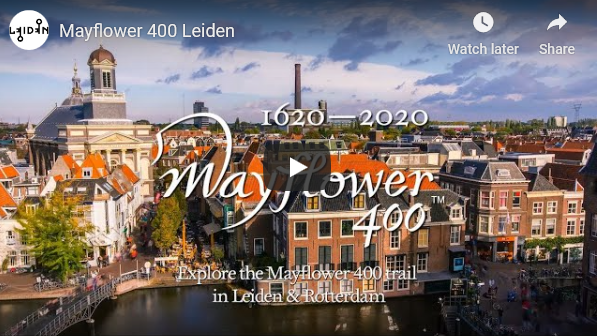THE NETHERLANDS AND MAYFLOWER
On February 12, 1609, the city government of Leiden granted 100 English religious refugees permission to settle in Leiden. Eleven year later a group of these radical refugees left for America as Pilgrims and founded Plymouth Colony in today’s Massachusetts. Most of the roughly hundred Pilgrims who found refuge in Leiden had previously lived off small-scale agriculture in England. Leiden was different. Upon arrival, they could immediately start working in the city’s textile industry – among the largest in Europe at the time.
The majority of Pilgrims had little trouble integrating into Leiden’s dynamic, non-agrarian multicultural society. But while many may have considered this a good thing, their leaders feared that these English Pilgrims would eventually lose their special religious and cultural identity.
The idea of establishing of a private colony in a New World – a place where they could live freely without the dictates of English Crown or the pull of Leiden’s free spirit – a place to which they could retreat and sustain their pure faith community, became an increasingly attractive idea.
Moreover, it was economically appealing for those who wanted to leave Leiden’s arduous textile industry, and build a new life and new home in a New World, America. They knew of England’s colony in Jamestown, Virginia, and this fueled their dreams and shaped their travel plans.
Where to buy PROJECT MAYFLOWER in the Netherlands:

American Book Center:
Donner (Netherlands):
www.donner.nl/search?keywords=project+mayflower+richard+stone

